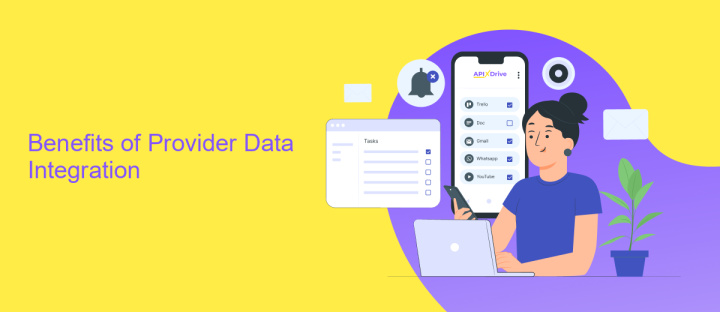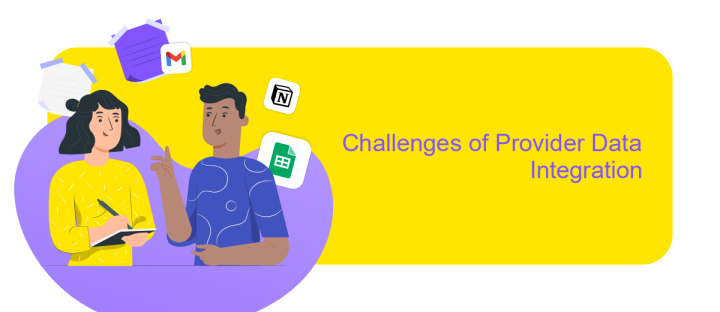Provider Data Integration
Provider data integration is a critical process that ensures accurate and up-to-date information is available across healthcare systems. It involves aggregating, standardizing, and synchronizing data from various sources to create a cohesive and reliable provider directory. Effective integration enhances operational efficiency, improves patient care, and reduces administrative burdens, making it an essential component in modern healthcare management.
Introduction
Provider Data Integration is a critical component in modern data management strategies. As businesses increasingly rely on diverse data sources to drive decision-making, the need to seamlessly integrate provider data has become paramount. This integration ensures that data from various providers is consolidated, accurate, and accessible, enabling organizations to gain comprehensive insights and maintain competitive advantage.
- Enhances data accuracy and consistency
- Streamlines data access and usability
- Facilitates better decision-making processes
- Reduces data silos
- Improves operational efficiency
By leveraging advanced integration techniques, companies can overcome the challenges associated with disparate data sources. Effective provider data integration not only optimizes data quality but also supports scalable and flexible data architectures. As a result, organizations can respond more rapidly to market changes, innovate more effectively, and achieve better business outcomes.
Benefits of Provider Data Integration

Provider Data Integration offers numerous benefits, significantly enhancing the efficiency and accuracy of data management. By integrating provider data, organizations can streamline their operations, reducing manual data entry and minimizing the risk of errors. This leads to improved data consistency and reliability, which are crucial for making informed business decisions. Additionally, integrated data systems facilitate better communication and collaboration among different departments, ensuring that all stakeholders have access to the same up-to-date information.
Moreover, tools like ApiX-Drive simplify the process of setting up integrations, offering a user-friendly platform to connect various data sources seamlessly. ApiX-Drive enables businesses to automate data transfers between systems, saving time and resources that would otherwise be spent on manual processes. This automation not only boosts productivity but also allows teams to focus on more strategic tasks. Ultimately, the integration of provider data through platforms like ApiX-Drive leads to enhanced operational efficiency, cost savings, and a stronger foundation for data-driven decision-making.
How to Integrate Provider Data

Integrating provider data into your system is a crucial step for ensuring seamless operations and accurate information flow. To achieve this, you need to follow a structured approach that guarantees data consistency and reliability. Below is a step-by-step guide to help you integrate provider data efficiently.
- Identify Data Sources: Determine the providers and the types of data you need to integrate.
- Data Mapping: Map the provider data fields to your system’s data fields to ensure compatibility.
- Data Extraction: Use APIs or other data extraction methods to retrieve data from provider sources.
- Data Transformation: Convert the extracted data into a format that matches your system’s requirements.
- Data Loading: Import the transformed data into your system's database.
- Data Validation: Verify the accuracy and completeness of the integrated data.
- Monitor and Maintain: Continuously monitor the data integration process and make necessary adjustments.
By following these steps, you can effectively integrate provider data into your system, ensuring that you have access to accurate and up-to-date information. This structured approach minimizes errors and enhances the overall efficiency of your data management processes.
Challenges of Provider Data Integration

Provider data integration is a complex process that involves merging and harmonizing data from various sources. This task is fraught with numerous challenges that can impede the seamless integration of provider data, affecting the overall efficiency and accuracy of the system.
One of the primary challenges is the inconsistency in data formats and standards across different providers. Each provider may use unique data structures, making it difficult to achieve uniformity. Additionally, the quality of data can vary significantly, with some providers maintaining high standards while others have incomplete or outdated information.
- Inconsistent data formats and standards
- Variable data quality
- Data redundancy and duplication
- Integration of legacy systems
- Compliance with regulatory requirements
Addressing these challenges requires a robust strategy that includes data standardization, regular quality checks, and the implementation of advanced integration technologies. By tackling these issues head-on, organizations can ensure more accurate and reliable provider data integration, ultimately enhancing operational efficiency and decision-making processes.
- Automate the work of an online store or landing
- Empower through integration
- Don't spend money on programmers and integrators
- Save time by automating routine tasks
Conclusion
Provider Data Integration is a crucial aspect for businesses aiming to streamline their operations and enhance data accuracy. By integrating data from various providers, organizations can achieve a unified view of their operations, leading to more informed decision-making and improved efficiency. The process involves consolidating data from disparate sources into a single, coherent system, ensuring that all stakeholders have access to up-to-date and consistent information.
Utilizing services like ApiX-Drive can significantly simplify the integration process. ApiX-Drive offers a user-friendly platform that allows businesses to connect various data sources seamlessly, reducing the complexity and time required for integration. By leveraging such tools, companies can focus more on their core activities while ensuring their data is accurate and readily available. In conclusion, effective provider data integration, supported by robust tools like ApiX-Drive, is essential for businesses looking to optimize their operations and maintain a competitive edge in today's data-driven world.
FAQ
What is Provider Data Integration?
Why is Provider Data Integration important?
What are the common challenges in Provider Data Integration?
How can automation help in Provider Data Integration?
What are the key features to look for in a Provider Data Integration tool?
Time is the most valuable resource for business today. Almost half of it is wasted on routine tasks. Your employees are constantly forced to perform monotonous tasks that are difficult to classify as important and specialized. You can leave everything as it is by hiring additional employees, or you can automate most of the business processes using the ApiX-Drive online connector to get rid of unnecessary time and money expenses once and for all. The choice is yours!


